biofilm
description: group of microorganisms in which cells stick to each other and, often, to a surface
36 results
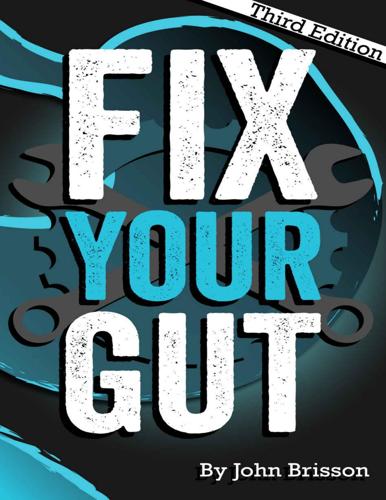
Fix Your Gut: The Definitive Guide to Digestive Disorders
by
John Brisson
Published 12 Apr 2014
Bacteria also produce protective biofilms (one of the most common examples of a biofilm is the “film” on your teeth that appears when you do not brush your teeth after a while) which make eradication with antibiotics very difficult. The biofilm protects the opportunistic bacteria from antibiotic treatment, bactericides, and probiotics. To eliminate the opportunistic bacteria you also have to disrupt the biofilm that protects the bacteria. Biofilm disruption can occur by either breaking down the biofilm itself using systemic enzymes or by chelating the iron out of the biofilm to dissolve it. To chelate the iron you can use either calcium disodium EDTA, lactoferrin, or NAC.
…
Some bacteria produce protective biofilms (one of the most common examples of a biofilm is the “film” on your teeth when you have not brushed for a while) that make eradication sometimes with antibacterial agents very difficult. Biofilm protects the bacteria from elimination by antibiotic treatments, natural antibacterial agents, bactericides, and probiotics. To eliminate the opportunistic bacteria, you have to destroy the biofilm that it is hiding behind. Lactoferrin breaks down bacterial biofilm by chelating iron out of the biofilm cell walls so that the biofilm breaks down and dissolves. The immune system and antibacterial agents are now free to eliminate the opportunistic bacteria.
…
Phytomedicine. 2005;12(8):601-6. https://www.ncbi.nlm.nih.gov/pubmed/16121521 Biofilms https://selfhacked.com/2016/03/01/44-science-backed-ways-toinhibit-biofilms-naturally-with-references/, Accessed April 28, 2014 http://chriskresser.com/treating-sibo-cold-thermogenisis-and-whento-take-probiotics, Accessed April 28, 2014 http://www.advancedhealing.com/dr-ettingers-biofilm-protocol-forlyme-and-gut-pathogens/, Accessed April 28, 2014 Kite P, Eastwood K, Sugden S, Percival SL. Use of in vivogenerated biofilms from hemodialysis catheters to test the efficacy of a novel antimicrobial catheter lock for biofilm eradication in vitro. J Clin Microbiol. 2004;42(7):3073-6. http://jcm.asm.org/content/42/7/3073.full.pdf Barrett JS, Canale KE, Gearry RB, Irving PM, Gibson PR.
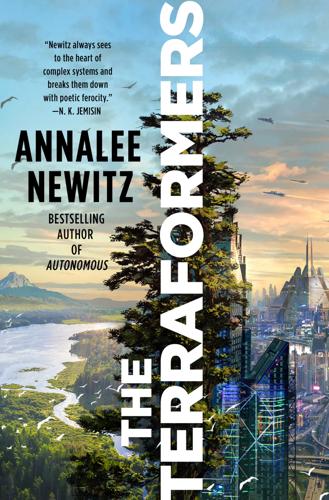
The Terraformers
by
Annalee Newitz
As they got closer to the healthcare engineering center, Sulfur paused. I’ve asked my friend to create some experimental medical devices for us. Sulfur grinned. Do you mind stopping by the biofilm printers? Why do you need a biofilm? Misha was confused. Sulfur pushed him gently against the wall of the dusky tunnel, cupping his face in their hands and tasting his plump, pretty lips as they continued to send. Biofilms aren’t just for building semipermeable membranes anymore. You can use them for all kinds of situations. Like blocking signals. His eyes widened. Wordlessly, he nodded. They continued strolling, pausing to pick up a paper-wrapped package at the printer and admire the lozenge-shaped windows emitting a deep orange light.
…
“Are you able to pick up any of the signal?” he asked. “No. I think Sample One might be all we need.” He relaxed. “That was too easy.” “You don’t want to try … Sample Two?” Sulfur raised an eyebrow and held up the next roll of biofilm. It had a slightly pearlescent sheen. Before he had a chance to reply, they ripped off another square and smoothed it on his other nipple, gently teasing it until he gasped. The biofilm was so thin that it didn’t feel like a barrier—more like he’d rubbed a moisturizer onto his skin—except once in a while when the material would wrinkle for a second and they would remember that there was a microbial textile between their bodies.
…
They ran the sensor slowly over the pearlescent square, almost grazing Misha’s skin, and his breath skipped as their eyes met. Again, he made a visible effort to bring himself under control. “I’m very impressed with Spider City’s biofilms. Two for two.” Then his eyes narrowed. “I wonder if I’ll be able to take some back to La Ronge. I could get off Ronnie’s radar sometimes.” This was definitely not what Sulfur wanted to be thinking about. “I’m going to secure your entire body with the biofilm now.” They grabbed Sample 2 and tore off a big sheet. “Take off your pants and stand up.” Misha’s face relaxed again and he stood up, releasing the gripper at his waist with the swipe of one hand.
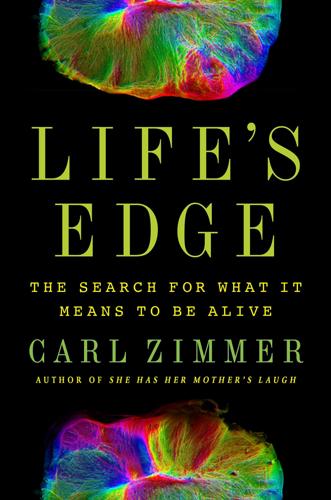
Life's Edge: The Search for What It Means to Be Alive
by
Carl Zimmer
Published 9 Mar 2021
Some grow into colonies that look like a splash of ink. Others look like slices of kumquats. Some take on the color of tangerines, others of blood. These colors and shapes are probably just side effects of mutations that make the bacteria grow better in biofilms. The diversity of the colors and shapes Cooper’s team has created may reflect the jungle-like complexity of life in a biofilm, a place in which evolution can fill many different niches with many different mutants. Over the week I had spent in the lab, Ott was conducting an experiment of her own next to me. I could see she was handling a tremendous number of tubes, flasks, and dishes, but I was so preoccupied with grabbing slimy beads with tweezers without shooting them across the lab that I couldn’t ask her much about it.
…
These proteins weave together into a gooey, sticky matrix. The microbe nuzzles itself into the goo to anchor itself to a surface. It can then feed on the protein fragments passing by. When it grows and divides, its daughter cells release their own goo, spreading their collective slime. Every species of Pseudomonas builds biofilms as a way to colonize surfaces—a leaf, a grain of soil, the gut of a grasshopper, the lung of a person with cystic fibrosis. I moved the slimy beads into new tubes into which I had placed fresh beads. The next day I found that the new beads had become slimy with bacteria, too, and these I moved onward to new tubes.
…
Every time a Pseudomonas divides, there’s about a one-in-a-thousand chance it will make a mistake, leaving behind a mutation in a daughter cell. With each cell able to produce a billion descendants in a day, my tubes produced many millions of mutants. And by moving beads from one tube to the next, I was favoring the mutants that were better at forming biofilms on the beads. Any bacteria still left floating in the broth were doomed to destruction when Ott and I sterilized the old tubes. A week after my first visit, I came into the lab to see if life had evolved under my watch. Ott held up a pair of petri dishes. “So, basically, here is a normal,” she said, moving one dish forward.

Genesis: The Deep Origin of Societies
by
Edward O. Wilson
Published 19 Mar 2019
With this information, the individual bacterium “decides” the rapidity of its movement, the rate of its reproduction, and, in the case of pathogenic species, even the virulence of its impact on the host in which it lives. In some incidents bacteria choose to form stable groups shielded by protective membranes and crusts, structures called biofilms. Bacteria have thus been found to be social to a degree almost unimaginable to scientists a generation ago. But of course the microbes are also mindless. Whether a persistent group of any kind of organism can evolve further than the microbial depends on the complexity of the individuals that compose it.
…
Hunt, J. H. 2011. A conceptual model for the origin of worker behaviour and adaptation of eusociality. Journal of Evolutionary Biology 25: 1–19. Liu, J., R. Martinez-Corral, A. Prindle, D.-Y. D. Lee, J. Larkin, M. Gabalda-Sagarra, J. Garcia-Ojalvo, and G. M. Süel. 2017. Coupling between distant biofilms and emergence of nutrient time-sharing. Science 356(6338): 638–642. Michener, C. D. 1958. The evolution of social life in bees. Proceedings of the Tenth International Congress of Entomology 2: 441–447. Nalepa, C. A. 2015. Origin of termite eusociality: Trophallaxis integrates the social, nutritional, and microbial environment.
…
Science 333(6044): 874–876. LeBlanc, S. A., and K. E. Register. 2003. Constant Battles: The Myth of the Peaceful, Noble Savage (New York: St. Martin’s Press). Liu, J., R. Martinez-Corral, A. Prindle, D.-Y. D. Lee, J. Larkin, M. Gabalda-Sagarra, J. Garcia-Ojalvo, and G. M. Süel. 2017. Coupling between distant biofilms and emergence of nutrient time-sharing. Science 356(6338): 638–642. Macfarlan, S. J., R. S. Walker, M. V. Flinn, and N. A. Chagnon. 2014. Lethal coalitionary aggression and long-term alliance formation among Yanomamö men. Proceedings of the National Academy of Sciences, USA 111(47): 16662–16669.
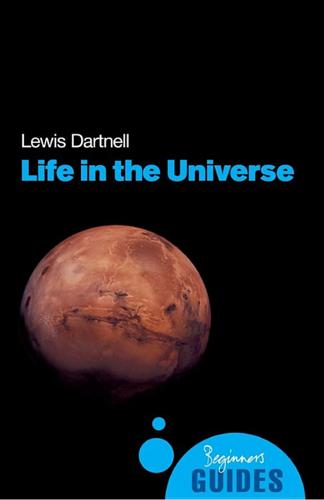
Life in the Universe: A Beginner's Guide
by
Lewis Dartnell
Published 1 Mar 2007
Without life, the reactions producing these chemicals would run far too slowly ever to set up gradients like this: diffusion and water currents would mix them more quickly than they could form. The fact that the Black Sea is not an even mix of chemicals is an ironclad proof of biological processes. At different scales, all ecosystems show such tiers: across metres in lake water, centimetres in sediments and micrometres in biofilms (such as on the surface of stromatolites). This gives astrobiologists the ability to detect alien ecosystems without making any assumptions about the appearance, genetics or metabolic networks of the organisms within them. Life betrays its presence in a layered series of redox zones in the environment, a clear indication of the driving force of biologically-accelerated chemistry.
…
The third class of evidence involves the dome- or column-shaped layered rock formations stromatolites. Today, such structures are created by mats of photosynthetic and heterotrophic bacteria living in warm, shallow water. Mucus excreted by the cells traps drifting sediment and binds it into a covering layer. The bacteria recolonise the new top surface open to the sun, and so over time these biofilms build into large structures of layered sedimentary rock, as seen in Figure 8. Similar-looking structures have been found in 3.5 billion-year-old rock, in the Warrawoona area, and have been cited as evidence of bacterial action, including photosynthetic cyanobacteria, at this very early date. No fossils of cells are found in these ancient structures and the curved layers could simply have been produced by the deformation of abiotic sediments.
…
Index accretion disc acetylene acidity acidophiles aerobes aerobic respiration algae ALH84001 alien life alkaliphiles Alpha Centauri amino acids ammonia amono-peptides anaerobes anaerobic respiration Andromeda Galaxy Anomalocaris Antarctic Dry Valleys anthropic principle aquifers artificial life asteroids astrobiology definition astrometry atmosphere of Earth of Mars of Titan ATP ATP synthase autocatalysis autotrophs bacteria barophiles Betelgeuse Big Bang biofilms biosignature/biosign biosphere black smoker see hydrothermal vents blue shift bombardment Callisto (moon of Jupiter) Cambrian Explosion 55 Cancri A carbohydrate carbon isotopes carbonaceous chondrites carbonate-silicate cycle carbon dioxide carbon fixation carbonic acid cell membrane cells cryopreserved chemoautotrophs chemosynthesis chirality (handedness) chitin chlorophyll chloroplasts climate collagen comets complex life continental crust convergence co-rotation cycle cosmic radiation craters cryo-volcanism cryptoendoliths cyanide cyanobacteria cytoplasm Darwinian definition Darwin space telescope Darwin’s pond deep basalt aquifers Deimos (moon of Mars) denaturation Devon Island DNA Doppler effect Earth Earthshine EcoSphere ecosystem enantiomers Enceladus (moon of Saturn) endolithic environments endosymbiosis energy extraction inorganic environment enzymes Epsilon Eri Eridanus eukaryotes Europa (moon of Jupiter) evolution extinction extra-solar planets extremophiles eye fixation carbon methane nitrogen flight formaldehyde formamide fossil record free radicals Gaia galaxies Andromeda Galaxy metallicity Milky Way Galileo Galilei Galileo probe Ganymede (moon of Jupiter) glaciation, runaway glucose Goldilocks Principle Golgi body gravitational microlensing greenhouse effect grylloblattid insects habitable zone haemoglobin halophiles handedness see chirality Haughton Crater HD28185 HD209458b Herschel, William heterotrophs homeobox genes Hot Jupiters Hubble Space Telescope Huygens lander hydrogen hydrogen cyanide hydrosphere hydrothermal vents hyperthermophiles icebugs impact impact frustration inorganic energy interference patterns interferometry Io (moon of Jupiter) iron ferrous isotope jarosite Jupiter moons Kepler spacecraft Krebs cycle life artificial emergence of as energy disequilibrium as information transmission on Mars lithoheterotrophs lithosphere Lowell, Percival LUCA (last universal common ancestor) magnetic fields Mars atmosphere canals environmental collapse evolution of life on geography Hellas impact basin Meridiani Planum Olympus Mons survival of life Valles Marineris volcanoes water on M-class dwarves Mercury Meridiani Planum metabolism metallicity metamorphosis meteorites methane methane fixation methanogens Milky Way mitochondria Moon formation of mRNA multicellular organisms Murchison meteorite myxobacteria natural selection nebulae Neptune nitrogen nitrogen fixation nucleotides nucleus oceanic crust Opportunity Mars Rover organelles organics on Mars synthesis organisms multicellular organoheterotrophs Orion osmosis oxidation oxygen oxygenic processes ozone PAH see polycyclic aromatic hydrocarbons panspermia, permafrost Phobos (moon of Mars) photoautotrophs photosynthesis planetary orbits planet formation plate tectonics Pluto polarity polycyclic aromatic hydrocarbons polymers porphyrins potential difference prebiotic chemistry primordial soup progenote collective prokaryotes proteins protein synthesis protons Proxima Centauri psychrophiles pulsars radial velocity technique red dwarves see M-class dwarves redox redox couples redox potential red shift reduction respiration reverse transcriptase ribose ribosomes ribozymes Rio Tinto RNA RNA world rockcrawlers Rubisco enzyme salinity Saturn moons Schiaparelli, Giovanni sight silicon-based life Sirius SLiMEs Snowball Earth snow line Space Interferometry Mission spallation zone Spirit Mars rover stars birth of Sun-like stromatolites subduction zones subsurface lithotrophic microbial ecosystems see SLiMEs sugars Sun supernovae symbiosis tardigrades (water bears) Tau Bootis Tau Ceti temperature Terrestrial Planet Finder thermophiles threose/TNA tidal heating tidal locking Titan (moon of Saturn) transit method tree of life triple alpha process tRNA ultraviolet (UV) radiation uranium Uranus Urey-Miller reactions vegetation Venus Viking probes viruses volatiles volcanism Vostok, Lake water on Mars phase diagram
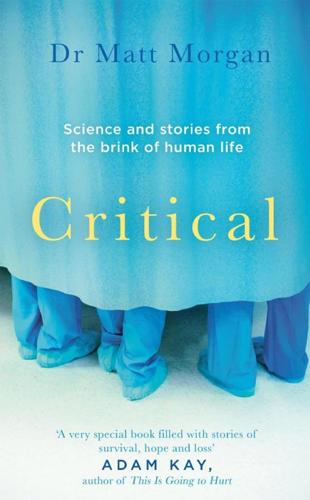
Critical: Science and Stories From the Brink of Human Life
by
Matt Morgan
Published 29 May 2019
‘. . . a decompressive craniectomy does produce more survivors, but with an increased likelihood of severe, profound disability overall.’ Cooper, D. J. et al. Decompressive Craniectomy in Diffuse Traumatic Brain Injury. N Engl J Med 364, 1493–1502 (2011). ‘. . . gel-like material produced by bacteria (a biofilm) forms around the plastic of breathing tubes.’ Sands, K. M. et al. Respiratory pathogen colonization of dental plaque, the lower airways, and endotracheal tube biofilms during mechanical ventilation. J Crit Care 37, 30–37 (2017). 7: THE GUTS ‘Along with tobacco, alcohol is by far the most dangerous recreational drug that we encounter in intensive care.’ Secombe, P. J. & Stewart, P.
…
The second night shift of caring for Joe, we became concerned that he had developed a severe lung infection called ventilator-associated pneumonia. When patients are unconscious on breathing machines, the normal defence mechanisms that protect the lungs become impaired. The patient does not cough, their mucus is not swept out from the windpipe, and gel-like material produced by bacteria (a biofilm) forms around the plastic of breathing tubes. This creates a perfect environment for bacteria. It can be difficult to distinguish lung infection from other causes of low oxygen levels in critically ill patients. We scanned Joe’s chest, looking for characteristic shadows inside his blood vessels caused by blood clots, but there were none.
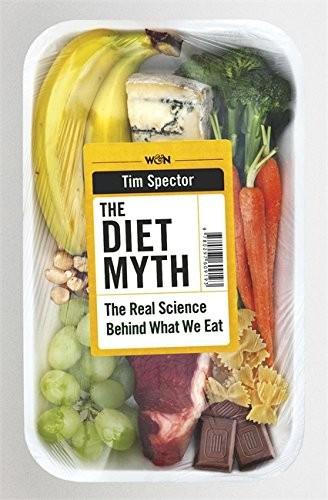
The Diet Myth: The Real Science Behind What We Eat
by
Tim Spector
Published 13 May 2015
Unfortunately, unlike the other harmless microbes, they used the sugar to produce lactic acid which made little holes in our tooth enamel. The Strep mutans stuck to our teeth by attaching themselves to dental plaque. This substance so familiar to us is in fact a colony of six hundred species of harmless bacteria stuck together to form a sticky mucous commune (called a biofilm). Ingeniously they produce a glue-like substance from the sugar they metabolise, which allows them to keep feeding safely while they hang on. Ironically, people who use a daily mouthwash may be killing off their healthy microbes and allowing the harmful ones to take over, leading to even more gum and tooth disease.11 One small study suggested this habit also increases blood pressure and risk of heart disease.12 Even at the height of the cavity epidemic, around 15 to 20 per cent of children would be relatively untouched.
…
Gritty survivors hang on in unusual places, and if, like me, you still have one, they can hide in the haven of the appendix – could this be its long-lost purpose, perhaps? They can also collect in the caecum, a corner of the colon that always contains some fluid, a smelly oasis in the desert. Microbes can lie low, too, in the tiny crevices of the intestinal wall, clinging on by forming biofilms with each other – although no one quite knows how they resist so well the tidal waves rushing through the bowel. The three-day prebiotic diet There are only a few reports following colonoscopy in humans, and the largest comprised fifteen patients. After a month, most recovered their previous microbial flora.
…
Olive oil intake and risk of cardiovascular disease and mortality in the PREDIMED Study. 11 Konstantinidou, V., FASEB J (Jul 2010); 24(7): 2546–57. In vivo nutrigenomic effects of virgin olive oil polyphenols within the frame of the Mediterranean diet: a randomized controlled trial. 12 Lanter, B.B., MBio (2014); 5(3): e01206–14. Bacteria present in carotid arterial plaques are found as biofilm deposits which may contribute to enhanced risk of plaque rupture. 13 Vallverdú-Queralt, A., Food Chem (15 Dec 2013); 141(4): 3365–72. Bioactive compounds present in the Mediterranean sofrito. 6 Trans Fats 1 https://www.youtube.com/watch?v=zrv78nG9R04 2 Lam, H.M., Lancet (8 Jun 2013); 381(9882): 2044–53.
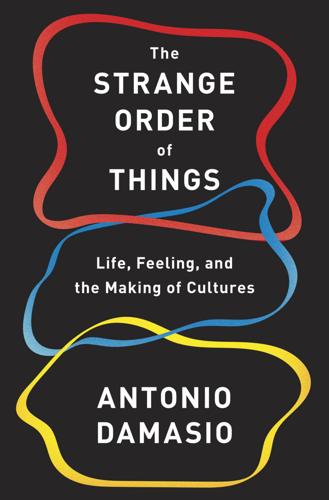
The Strange Order of Things: The Biological Roots of Culture
by
Antonio Damasio
Published 6 Feb 2018
The governing imperative is still the same—homeostasis—but there are more steps on the way to achieving results. First, capitalizing on the established existence of a corpus of simple social responses in existence since bacterial life began—competition, cooperation, simple emotivity, collective production of instruments of defense such as biofilms—the many species in the lineage that preceded us evolved and genetically transmitted a class of intermediate mechanisms capable of producing complex, pro-homeostatic emotive responses that are also, more often than not, social responses. The critical component of those mechanisms is lodged in the machinery of affect described in chapter 7.
…
Griffin, Genevieve S. Campbell, and Stuart A. West, “Cooperation and Conflict in Quorum-Sensing Bacterial Populations,” Nature 450, no. 7168 (2007): 411–14; Lucas R. Hoffman, David A. D’Argenio, Michael J. MacCoss, Zhaoying Zhang, Roger A. Jones, and Samuel I. Miller, “Aminoglycoside Antibiotics Induce Bacterial Biofilm Formation,” Nature 436, no. 7054 (2005): 1171–75; Ivan Erill, Susana Campoy, and Jordi Barbé, “Aeons of Distress: An Evolutionary Perspective on the Bacterial SOS Response,” FEMS Microbiology Reviews 31, no. 6 (2007): 637–56; Delphine Icard-Arcizet, Olivier Cardoso, Alain Richert, and Sylvie Hénon, “Cell Stiffening in Response to External Stress Is Correlated to Actin Recruitment,” Biophysical Journal 94, no. 7 (2008): 2906–13; Vanessa Sperandio, Alfredo G.
…
McMahon, Federica La Russa, and David L. H. Bennett, “Crosstalk Between the Nociceptive and Immune Systems in Host Defense and Disease,” Nature Reviews Neuroscience 16, no. 7 (2015): 389–402. 3. Brunet and Arendt, “From Damage Response to Action Potentials”; Hoffman et al., “Aminoglycoside Antibiotics Induce Bacterial Biofilm Formation”; Naviaux, “Metabolic Features of the Cell Danger Response”; Icard-Arcizet et al., “Cell Stiffening in Response to External Stress Is Correlated to Actin Recruitment”; Kearns, “Field Guide to Bacterial Swarming Motility”; Erill, Campoy, and Barbé, “Aeons of Distress.” Transient receptor potential (TRP) ion channels serve as the sensors in single-celled organisms and are conserved throughout phylogeny.
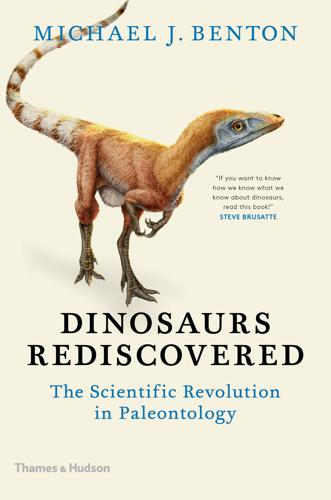
Dinosaurs Rediscovered
by
Michael J. Benton
Published 14 Sep 2019
*Crichton, M. 1990. Jurassic Park. Alfred A. Knopf, New York The book that started it all. Doyle, A. C. 1912. The Lost World. Hodder & Stoughton, London Kaye, T. G., Gaugler, G., and Sawlowicz, Z. 2008. Dinosaurian soft tissues interpreted as bacterial biofilms. PLoS ONE 3, e2808 Rejection of reported blood vessels in dinosaur bone as bacterial biofilms. Kupferschmidt, K. 2014. Can cloning revive Spain’s extinct mountain goat? Science 344, 137–38 Lindahl, T. 1993. Instability and decay of the primary structure of DNA. Nature 362, 709–15 Evidence, from the start, that ancient DNA was unlikely to survive for millions of years.
…
Buckley, M., Warwood, S., van Dongen, B., Kitchener, A. C., and Manning, P. L. 2017. A fossil protein chimera: Difficulties in discriminating dinosaur peptide sequences from modern cross-contamination. Proceedings of the Royal Society B 284, 20170544 Rejection of reported blood vessels in dinosaur bone as bacterial biofilms. Burroughs, E. R. 1918. The Land that Time Forgot. A. C. McClurg, Chicago Cano, R. J., Poinar, H. N., Pieniazek, N. J., Acra, A., and Poinar, G. O., Jr. 1993. Amplification and sequencing of DNA from a 120–135-million-year-old weevil. Nature 363, 536–38 Cano, R. J., Poinar, H. N., Roubik, D. W., and Poinar, G.
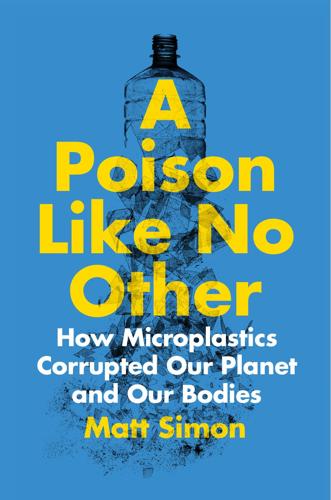
A Poison Like No Other: How Microplastics Corrupted Our Planet and Our Bodies
by
Matt Simon
Published 24 Jun 2022
Scientists have found bacterial communities on sludge microplastics to be way more diverse than particles plucked from raw sewage and the effluent that flows out of a wastewater facility.47 They’ve also discovered a number of bacteria that cause human intestinal infections on microplastics downstream of treatment plants, so the microbes are using the particles as rafts.48 Another experiment found that when applied to sludge in the lab, microplastics grew far more biofilm than sand particles, in turn accumulating up to 30 times the abundance of genes associated with antibiotic-resistant bacteria.49 These researchers reckoned the issue was an especially populous bacteria on the particles called Novosphingobium pokkalii, which secretes a glue-like substance that other bacteria stick to—the microplastic particle, then, snowballs through the sludge collecting microbes, far more efficiently than natural particles like sand.50 Extra worrisome is that bacteria pull off a trick called horizontal gene transfer, in which DNA swaps between individuals instead of from parent to offspring, and that can even happen between different species of bacteria.
…
“Diversity and Predicted Inter- and Intra-Domain Interactions in the Mediterranean Plastisphere.” Environmental Pollution 286:117439. https://doi.org/10.1016/j.envpol.2021.117439. Harrison, Jesse P., Timothy J. Hoellein, Melanie Sapp, Alexander S. Tagg, Yon Ju-Nam, and Jesús J. Ojeda. 2018. “Microplastic-Associated Biofilms: A Comparison of Freshwater and Marine Environments.” In Freshwater Microplastics: Emerging Environmental Contaminants? The Handbook of Environmental Chemistry 58, edited by Martin Wagner and Scott Lambert. https://doi.org/10.1007/978-3-319-61615-5_11. Kooi, Merel, Egbert H. van Nes, Marten Scheffer, and Albert A.
…
“Characterization of Per- and Polyfluorinated Alkyl Substances Present in Commercial Anti-Fog Products and Their In Vitro Adipogenic Activity.” Environmental Science and Technology. https://doi .org/10.1021/acs.est.1c06990. 92. Bhagwat, Geetika, Thi Kim Anh Tran, Dane Lamb, Kala Senathirajah, Ian Grainge, Wayne O’Connor, Albert Juhasz, and Thava Palanisami. 2021. “Biofilms Enhance the Adsorption of Toxic Contaminants on Plastic Microfibers under Environmentally Relevant Conditions.” Environmental Science and Technology 55 (13): 8877–87. https://doi .org/10.1021/acs.est.1c02012. 93. Burki, Talha. 2021. “PFAS: Here Today—Here Tomorrow.” Lancet 9 (12). https://doi.org/10.1016/S2213-8587(21)00294-1. 94.

A Short History of Humanity: How Migration Made Us Who We Are
by
Johannes Krause
and
Thomas Trappe
Published 8 Apr 2021
To pass from one mammal to another, the bacteria had to reach the flea and then enter the bloodstream of the other organism. But fleas don’t naturally expel blood—they only consume it. The bacterium cleared this final hurdle by evolving “virulence genes,” which enabled it to survive in the flea’s stomach. More ominously for the flea, several of the virulence genes also prompt the bacteria to produce a biofilm in the animal’s foregut, which blocks the flea’s stomach and infects every fluid that touches it. The infected flea’s suffering begins when it tries to suck blood from another organism after its foregut has been blocked. The flea ingests the host’s uninfected blood and then vomits the now-infected blood back out, infecting its prey.
…
J., The Black Death, 1346–1353: The Complete History. 2004. Boydell & Brewer. Hinnebusch, B. J., C. O. Jarrett, and D. M. Bland, “Flea-ing” the plague: adaptations of Yersinia pestis to its insect vector that lead to transmission. Annu Rev Microbiol, 2017. 71: 215–32. Hinnebusch, B. J., and D. L. Erickson, Yersinia pestis biofilm in the flea vector and its role in the transmission of plague. Curr Top Microbiol Immunol, 2008. 322: 229–48. Wiechmann, I., and G. Grupe, Detection of Yersinia pestis DNA in two early medieval skeletal finds from Aschheim (Upper Bavaria, 6th century A.D.). Am J Phys Anthropol, 2005. 126(1): 48–55.
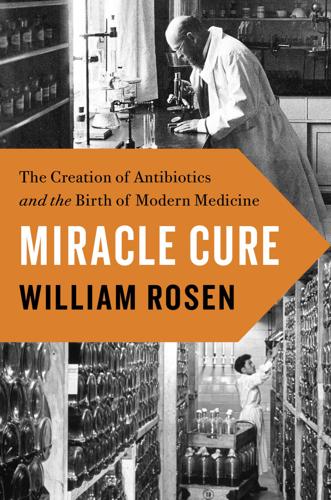
Miracle Cure
by
William Rosen
Published 14 Apr 2017
Antibiotic molecules in nature aren’t always, or even usually, weapons. Bacterial populations react to the presence of low concentrations of antibiotic molecules in a variety of ways, and many of them are actually positive. Many antibiotics are what biologists call “hormetic”: beneficial in low doses, even promoting the creation of what are known as biofilms, matrices that hold bacterial cells together with a polymer “glue” and make them far more durable in the presence of both the animal immune system, and antibiotics themselves. This is especially true for the tetracyclines. Low doses of Aureomycin and Terramycin and all the other antibiotics related to them actually increase the virulence of large numbers of pathogens.
…
“the most versatile antibiotic”: (Podolsky, 2015) shipping samples of their gold maker to 142,000 doctors: (Silberman, 1960), quoted in (Podolsky, 2015) “We got soil samples”: (Rodengen, 1999) “because it came from the earth”: (Rodengen, 1999) “If you want to lose your shirt”: (Podolsky, 2015) Aureomycin accounted for 26 percent: (McEvilla, 1955) “outstanding achievements in the art of organic synthesis”: (Nobel Prize Foundation, 2014) complicated molecule known as Vitamin B12: (Woodward, 1973) “None of us thought he was really that great”: (Tishler, 1983) it was Woodward who demonstrated that the beta-lactam structure: (Abraham, “Ernst Boris Chain,” 1983) facts “both clear and misleading”: (Blout, 2001) “by thought alone, deduced the correct structure”: (Blout, 2001) the FDA approved it: (Daemmrich, 2004) on March 23, 1950: (Maeder, 1994) seventy third-year medical students: (Mahoney, 1958) By 1952, three hundred Pfizer reps: (Chandler, 2005) By the early 1950s, more money: (Podolsky, 2015) Lederle planned to launch Achromycin: (Maeder, 1994) stabilized thereafter for another decade: (Temin, 1980) Achromycin, its version of tetracycline: (Temin, 1980) “Doctors Get a Heap of Comfort”: (Grinnell, 1914) the journal was carrying more advertising pages: (Temin, 1980) virtually every issue of JAMA arrived: (Podolsky, 2015) The mechanism for this: (Gaskins, 2002) “dug residues out of the Lederle dump”: (Jukes, 1985) “Wonder Drug . . . had been found”: (Laurence, 1950) “The average weight”: (Jukes, 1985) what he called “Project Piglet” . . . as Terralac: (Rodengen, 1999) Only the 31 showed resistance: (North, 1945) May 1940, milk cows: (Bud, Penicillin, 2007) milked before the penicillin: (Bud, Penicillin, 2007) dosages were very small: (Graham, 2007) biofilms, matrices that hold: (Davies, 2009) EIGHT: “The Little Stranger” “the only House in the West” . . . and Wormseed: (Kahn, 1976) “profit on blood which has been donated”: (Madison, 1989) to three-quarters of the entire American market: (Chandler, 2005) were “unreasonably high”: (Madison, 1989) “novel compound having antibiotic properties”: (Bunch, 1952) “looks at present quite hopelessly complex”: (Todd, 1956) The drug was Chloromycetin: (McEvilla, 1955) “ether, sweet spirits of nitre”: (Hoeffle, 2000) Parke was its first president: (Mahoney, 1958) “difficult to believe that one is under the influence of any drug at all”: (Byck, 1974) “the different varieties of coca”: (Parke, Davis & Company, 1894) “involving four thousand miles”: (Parke, Davis & Company, 1894) Davis even hired Freud himself: (Maeder, 1994) Freud’s evaluation, for which he was paid an honorarium of 60 Dutch gulden—about $50—found that Merck’s cocaine was, compared to Parke-Davis’s, overpriced and difficult to find.
…
D., 88 alternate allocation studies, 208–9 alternative medicine, 12, 85n American Aniline, 160 American Chemical Society, 232 American Cyanamid, 215, 225–27, 227n American Medical Association (AMA), 73, 75, 249, 252, 256, 262, 274, 275, 281 Journal of the American Medical Association (JAMA), 228–29, 249, 255, 258, 275, 281 American Society of Pharmacology, 222 Amici, Giovanni, 18–19 amine groups, 54 anaphylaxis, 262 anemia, 230, 249 aplastic, 249–52, 254, 258–62, 279, 281 aniline dyes, 46, 47, 52, 54, 64, 158, 244 animal diseases, 184 anthrax, 22–23, 25–27, 35, 202, 224 vaccine for, 26–27 Antibiotic Medicine and Clinical Therapy, 269–71 antibiotics, 72, 92, 139, 152, 155–56, 176, 181, 236–37, 257, 265–74, 297–305 advertising of, 229 animals’ growth accelerated by, 231–37, 302 broad-spectrum, 217, 224–25, 240, 242, 276, 277 coining of word, 192 fixed-dose combination, 213n, 271–73, 279 FTC report on, 276–77 GAIN and, 301, 303, 304 hormetic, 236–37, 251 Kefauver hearings and, 279 macrolide, 238 overuse of, 265–67, 302 poisoning from, 266 quinolone, 299 resistance to, 77–78, 234–37, 264n, 266, 297, 301–4 safety of, 261–63, 302 stewardship programs for, 302 viral diseases and, 266–67, 302 vitamins and, 271 World War II and, 177 Antibiotics and Chemotherapy, 249, 269 antibodies, 43, 44, 48 antigens, 42, 48 antihistamine, 242 antiseptics, 34–36, 67, 87 Antitrust and Monopoly Subcommittee (Kefauver hearings), 277–81, 288, 291 aplastic anemia, 249–52, 254, 258–62, 279, 281 Arrowsmith (Lewis), 208 arsenic, 53–55, 63, 65, 242 arsphenamine (Salvarsan), 55–56, 57–59, 63, 67, 84, 86, 100, 131, 150, 178, 192 ascorbic acid, 199 Aspergillus niger, 138 aspirin, 212 Atabrine, 176, 177 Atiyah, Michael, 105n atoms, 49–52 atorvastatin, 296 atoxyl, 53–55 atropine, 159 Aureomycin, 216–19, 223–27, 231–34, 236, 237, 254, 272, 274 autopsies, 22 Aventis, 297 azobenzene dyes, 52, 64–66, 68, 70, 102 AZT, 294 Bacillus subtilis, 112 bacteremia, 3 bacteria, 23–25, 28, 36, 41, 236 antibiotic resistance and, 77–78 gram-negative, 94, 181, 192, 194, 217, 218, 237, 244, 298 gram-positive, 94, 174, 175, 190, 194n, 198, 217, 218, 224, 238, 244 oxygen and, 87 reproduction of, 94 soil-dwelling, 23, 24, 129, 132, 190–95, 199, 213, 216–18, 236, 238, 243–44, 263, 274, 301n type III secretion system in, 237 bacterial pneumonia, 35 Baeyer, Adolf von, 46 Banting, Frederick, 239 barbiturates, 286 Barker, Thomas Vipond, 142 Barnes, John M., 117 Bartz, Quentin, 244 BASF, 57, 62, 63, 178 battlefield injuries, 86, 87, 163, 167, 178, 180 Bayer, 62–71, 102, 160n, 225, 296, 299n Bean, William, 257 Beaverbrook, Max Aitken, Lord, 95, 100 Béchamp, Antoine, 52–53 Beecham Limited, 121 Behring, Emil von, 35, 43–47, 57, 62, 63, 104, 215, 242, 296 belladonna, 158, 159, 242, 261 Bell Labs, 162 Benadryl, 242 benzene, 250 Berenblum, Isaac, 109 Bernal, J. D., 144 Bernard, Claude, 26–27, 85n Bernhauer, Konrad, 137 Bernoulli, Daniel, 14 Bertheim, Alfred, 53–54 Best, Charles, 239 beta-lactam ring, 3, 175, 220–21, 304 Bi-Con, 233 Bigelow, Jacob, 73–74 bile, 7 biofilms, 236 biological warfare, 202–3 Biot, Jean-Baptiste, 16 Bismarck, Otto von, 29, 44 bismuth, 159 Blair, John, 276, 277 blistering, 10 blood, 7 blood dyscrasias, 248–50, 254, 264 bloodletting, 5, 7, 9, 14, 183 Washington and, 5 Blundell, James, 67n Bohr, Niels, 99n bone marrow, 250 Boots Pure Drug Company, 173 Bosch, Carl, 62, 63, 178 Boston Globe, 166 Bovet, Daniel, 69–70 Bragg, Lawrence, 143–44 Bragg, William Henry, 143–44 Bristol Laboratories, 225–27, 227n, 240 Bristol-Myers, 244n Bristol-Myers Squibb, 270, 296, 297 Britain: army of, 82, 84–86, 119 pharmaceutical industry in, 121–22, 141 Brown, Francis C., 278 bubonic plague, 13, 35, 194, 197, 217, 224, 237 Buchner, Eduard, 26n Buchner, Hans, 43 Bugie, Elizabeth, 205 Bumstead, John, 1–2 burial alive, 6n Burkholder, Paul, 243–44 burn patients, 166 Burroughs, Silas M., 122 Burroughs Wellcome, 122, 293–94 Bush, Vannevar, 152, 153, 177 caffeine, 158 Calmette, Albert, 189 calomel (mercurous chloride), 5, 9, 164 Campbell, Walter G., 74 camphor, 164 Canby, Henry Seidel, 265 cancer: leukemia, 43 Wilms’ tumor, 192n carbolic acid (phenol), 34, 35, 46, 56n, 86, 87, 159 Carnegie Foundation, 256 Caro, Heinrich, 53 Carter, Charles, 233 Cassella Manufacturing, 57, 62, 160n Celler, Emanuel, 271 Centers for Disease Control and Prevention, 251n, 302 cephalosporin, 3, 235n Chadwick, James, 3 Chain, Ernst, 103–15, 106, 117–18, 120–21, 125–27, 129, 140–42, 144, 145, 148, 155–57, 165, 174, 175, 180–81, 198, 201, 221, 235, 293, 305 Chamberland, Charles, 26 Chatton, Edouard, 24 cheese, 134n, 138n chemical reactions, 51 chemical synthesis, 50, 66 Chemie Grünenthal, 282 chemistry, 49 combinatorial, 63n chemotherapy, 49 Chester County Mushroom Laboratories, 170 chicken pox, 11n childbed (puerperal) fever, 67–68, 72 chlamydia, 217, 237 chloramphenicol, 3 chloroform, 164 Chloromycetin (chloramphenicol), 240, 244–54, 256–60, 268, 276, 279, 280, 287 aplastic anemia and, 249–52, 254, 258–62, 279, 281 gray baby syndrome and, 259–62 sales of, 253, 259 typhus and, 245–47 chlorophyll, 220 chlortetracycline, 244 Aureomycin, 216–19, 223–27, 231–34, 236, 237, 254, 272, 274 see also tetracyclines cholera, 13–15, 26, 28, 35, 194 cholesterol, 220, 296 Churchill, Winston, 76, 119, 173, 293 CIBA, 127 CIBA-Geigy, 181 citric acid, 137–38, 164, 171 Civil War, 81, 163, 241 Clark, William Mansfield, 153 Cline, Joseph, 162 clinical trials, 207–8, 273, 274n, 288 children in, 260n informed consent in, 289 of penicillin, 129–30, 132, 139, 141, 148 sampling in, 208–9 of streptomycin, 207–13 of Terramycin, 219 three-tiered structure for, 289–90, 292 clostridia, 87n, 125, 194, 198 coal tar extracts, 34, 46, 49, 159 coca, cocaine, 69, 73, 159, 241–42, 261 Coca-Cola, 73 Cocoanut Grove, 166–67 Coghill, Robert, 136, 137, 138, 148, 153, 157, 164, 168, 169 cognitive biases, 209 Cohn, Ferdinand Julius, 23, 25 Colebrook, Leonard, 68, 86–87 colistin, 297–98 Collier’s, 248 Commercial Solvents Corporation, 169 Committee on Medical Research (CMR), 151–53, 167, 169–71, 180, 216 computers, 173–74 Conant, James Bryant, 199 cortisone, 199, 220 Coulthard, C.

Home Comforts: The Art and Science of Keeping House
by
Cheryl Mendelson
Published 4 Nov 1999
Microbes can fairly quickly—in as little as twenty minutes—attach themselves to kitchen and other household surfaces; other microbes can then attach themselves to these, forming layers twenty to thirty microbes thick. Embedded in these layers of microorganisms may be bacteria, yeasts, molds, algae, and food particles. The biofilm sticks tenaciously to even the slickest, hardest, least-porous surfaces, including glass and stainless steel. Worse, microorganisms embedded in biofilms are more resistant to sanitizers, and the longer they remain, the harder it is to kill them. Scrubbing—muscle power—helps remove a biofilm. When and Where. Sanitizers and disinfectants are useful outside the kitchen in the following ordinary household circumstances: • Regularly, on the toilet, inside and out, and on surfaces and floors near the toilet • Occasionally, in the tub and shower stall to prevent mildew as well as bacterial growth • In whirlpool baths and hot tubs, in accordance with manufacturers’ instructions • Frequently, in sink drains and connecting pipes • Wherever a musty odor appears (an indication of mold) • Regularly, in diaper pails or when washing diapers • Regularly, on changing tables (but see “Special Cautions for Homes with Infants,” below) • In damp basements • When children or pets have accidents • When cleaning pets’ cages and litter boxes (But be sure what you use is safe for the pet.
…
Stronger solutions might leave residues or cause unpleasant bleach smells. In other places in this book, such as chapter 30, different recipes are recommended for other purposes. Bacteria have been found to create an invisible, strongly adhering, slimy layer or film of cells, called a biofilm, on even hard and smooth surfaces such as stainless steel. Some research indicates that a biofilm is not easily removed with chemical means alone—for example, detergent or sanitizer—because the film prevents penetration by the chemical. Mechanical force, such as a stream of hard-running water or scrubbing, was found to be important in getting the film off.
…
Murphy, 656 old-style, nostalgia for, 682 pillows, choosing, 684-86 snoring and, 658 turning down of, 668 waterbeds, 684 see also bedding; comforters; mattresses; pillows bedsheets: absorbency and, 678 all-combed-cotton percale, 675, 677, 678, 680, best fibers for, 676 bottom, fitted and flat, 665 changing of, how often, 662 colorfastness and, 679 colors and prints of, 676-77, 679 comfort of, factors affecting, 677-79 cotton/polyester blend, 677-78, 679, 680 crib, 678, 679 decorative stitching on, 676, 678-79 designer, 680 dry-cleaning fluid fumes and, 679 durability of, 675-77 Egyptian cotton, 675 fading of, 676 flannel, 678 folding of, 356 hand of, 677-78 knit, 678 launderability of, 679-80 laundering of, 661 linen (flax), 678, 680 mitered or “hospital” corners for, 665 muslin, 675, 679 no-iron, 680 percale, 675, 679 pilling of, 680 pima cotton, 675 plain-weave, 675 polyester, 678 prewashed percale, 678 removing stains from, 676 rubberized cotton waterproof, 664 sateen, 675 satin-weave, 675, 677 shrinkage and, 673, 679 silk, 677, 678 size, calculating, 674 standard measurements, 673 thread counts of, 675, 677 top, 665 twill, 675 “universal” or deep corners on, 673 untreated all-cotton, 680 warmest and coolest fabrics for, 678 warmth and, 678 weave and weight of, 675 whites vs. colors and prints, 676-77 wrinkle-resistant all-cotton percale, 678 wrinkle-treated, 679 wrinkly, 680 see also bedding; beds; mattresses; pillows bedsores, 683 bedspreads, 664, 666, 674 Beecher, Catharine, 13 beetles, 160 carpet, 688 powderpost, 496 beetling, 225, 234 benzene, 403, 404, 405, 416 benzopyrene, 415 benzoyl peroxide, 372 Bettelheim, Bruno, 595-97 Better Business Bureau, 771, 794 beverages, 70-87 alcoholic, 82-87 bidets, 531-32 biofilm, 174, 427 bird’s eye fabric, 199 birth certificates, 828, 836 blankets: acrylic, 680-81 cotton, 680 electric, 681, 725 folding of, 356 functional qualities of, 680-81 laundering of, 358-59, 661, 667-68 in making the bed, 665 nylon, 680 polyester, 680-81 sizes of, 674-75 weaves of, 197 wool, 681 “blanket tents,” for elderly, 670 bleach, 316-19 on acetate fabrics, 256 on acrylic fabrics, 260 on colored fabrics, 299 instructions on care labels, 281, 283-84, 286-87 on polyester fabrics, 259 on rayon fabrics, 255 on white laundry, 297-98 on wool fabrics, 247 see also bleach, chlorine; bleach, oxygen; hydrogen peroxide bleach, chlorine, 228, 258, 277, 282, 306, 307, 312-13, 318-19, 360, 373, 376-77, 421, 509, 649 bleach, chlorine (cont.)
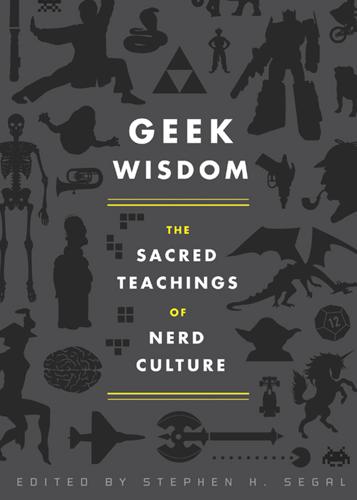
Geek Wisdom
by
Stephen H. Segal
Published 2 Aug 2011
And it’s alarming to see that the non-geek portions of the media have taken the same path; heck, the Jon Stewart/Stephen Colbert rally of 2010 was mostly an attempt to ask, “Can we please stop calling each other Hitler?” It would seem the answer is no. At least some geeks are fighting to take back the Hitler epithet in the name of good-spirited silliness. Thousands of YouTube videos have mashed up a scene in the Hitler bio-film Downfall with topics ranging from Xbox to Twilight. “I LOVE IT WHEN A PLAN COMES TOGETHER!” —JOHN “HANNIBAL” SMITH, THE A-TEAM HAN SOLO MAY HAVE SHOWN us the seat-of-your-pants thrill of improvising, but Hannibal Smith taught us there’s something to be said for taking the long view. And one thing you can’t accuse the jocular leader of the A-Team of is not taking the long view, with his daisy-chain schemas of elaborate disguises, car crashes, and lots of pyrotechnics making it all the sweeter when he deployed his trademark catchphrase as the payoff to a job well done.
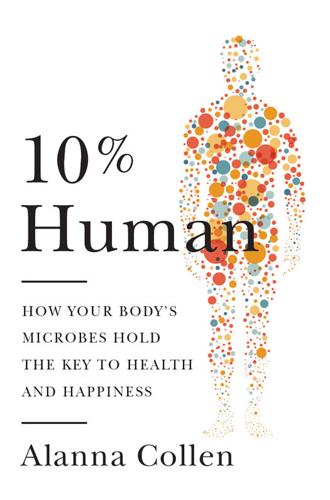
10% Human: How Your Body's Microbes Hold the Key to Health and Happiness
by
Alanna Collen
Published 4 May 2015
The appendix, which averages about 8 cm in length and a centimetre across, forms a tube, protected from the flow of mostly digested food passing its entrance. But rather than being a withered strand of flesh, it is packed full of specialised immune cells and molecules. They are not inert, but rather an integral part of the immune system, protecting, cultivating and communicating with a collective of microbes. Inside, these microbes form a ‘biofilm’ – a layer of individuals that support one another and exclude bacteria that might cause harm. The appendix, far from being functionless, appears to be a safe-house that the human body has provided for its microbial inhabitants. Like a nest egg stashed away for a rainy day, this microbial stockpile comes in handy at times of strife.
…
International Human Genome Sequencing Consortium (2004). Finishing the euchromatic sequence of the human genome. Nature 431: 931–945. 2. Nyholm, S.V. and McFall-Ngai, M.J. (2004). The winnowing: Establishing the squid–Vibrio symbiosis. Nature Reviews Microbiology 2: 632–642. 3. Bollinger, R.R. et al. (2007). Biofilms in the large bowel suggest an apparent function of the human vermiform appendix. Journal of Theoretical Biology 249: 826–831. 4. Short, A.R. (1947). The causation of appendicitis. British Journal of Surgery 53: 221–223. 5. Barker, D.J.P. (1985). Acute appendicitis and dietary fibre: an alternative hypothesis.
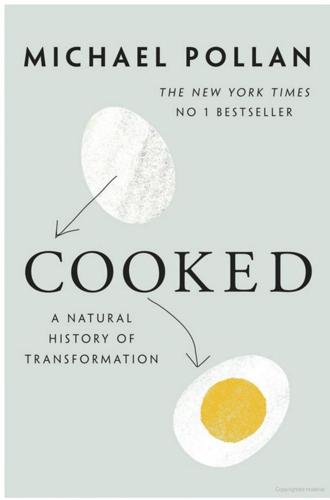
Cooked: A Natural History of Transformation
by
Michael Pollan
Published 22 Apr 2013
The phrase “live-culture foods” is of course a euphemism: for fermented foods teeming with living bacteria and fungi. “Live-culture” sounds a lot more appetizing than, say, “bacteria” for breakfast, in the same way that calling a cheese “washed rind” goes down more easily than “coated with a biofilm of bacteria and mold,” which is what a washed-rind cheese is. Enjoying my “live-culture” pickles and kimchi, I gave some thought to the billions of microbes I was ingesting along with the vegetables, wondering what in the world they might be doing down there. But somewhere deep in the coils of my intestines one community of microbes was presumably encountering another.
…
Once scrubbed, its perfectly smooth, machine-tooled surface gleams, offering an objective correlative of good hygiene. Wood on the other hand bears all the imperfections of a natural material, with grooves and nicks and pocks where bacteria can easily hide. And indeed the inside of Sister Noëlla’s cheese-making barrel wears a permanent cloak of white—a biofilm of milk solids and bacteria. You could not completely sterilize it if you tried, and part of the recipe for Saint-Nectaire involves not trying: Lydie told Noëlla that between batches the barrel should only be lightly rinsed with water. So it happened that in 1985, after raw-milk cheese was implicated in the deaths of twenty-nine people in California, the state health inspector demanded that Sister Noëlla get rid of her wooden barrel and replace it with stainless steel.

Alive
by
Gabriel Weston
Published 15 Aug 2025
The remaining stump of femur is drilled clean of its yellow marrow. Green ‘trials’, like golf balls, are slotted into the hip socket until the right size is found. Purple-blue trial shafts are also fitted and then both are swapped for the ‘definitive’, which is a titanium ball and rod, covered in silver to prevent the formation of a biofilm, which might prevent antibiotics working, should they be needed postoperatively. The lower end is covered with hydroxyapatite to encourage a cuff of new bone to form around the prosthesis. A mesh called a Trevira sleeve is pulled over the rod, like a sock, before bone cement is squirted snugly into the drilled-out femur.
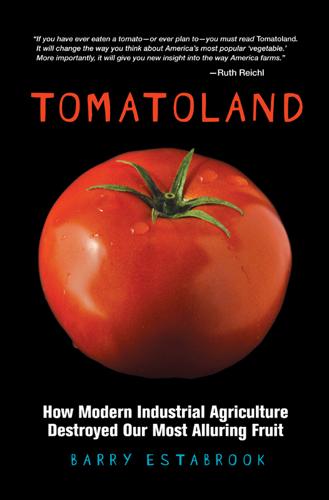
Tomatoland: How Modern Industrial Agriculture Destroyed Our Most Alluring Fruit
by
Barry Estabrook
Published 6 Jun 2011
Birds, reptiles, and infected fieldworkers are all vectors for salmonella, which can stay alive in the fields and irrigation water for months. The bacteria can get inside the fruits, where it is safe from external attempts to wash it away, through roots, flowers, cuts in stems, and breaks in the fruits’ skin. Salmonella can also encase itself in a biofilm, a natural protective sheath it creates for itself on the exterior of tomatoes, rendering washing ineffective and allowing the bacteria to survive packing, storing, and shipping. Once they had completed the circuit through the chlorination trough, Procacci’s tomatoes boarded an escalator, which took them out of the bath water and up toward an opening into the warehouse.
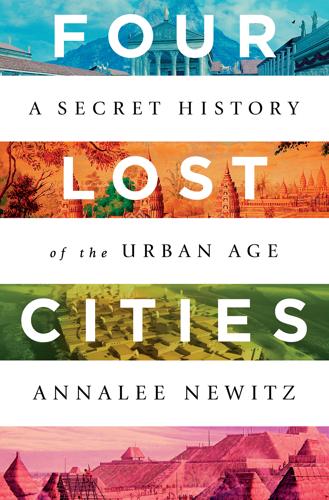
Four Lost Cities: A Secret History of the Urban Age
by
Annalee Newitz
Published 2 Feb 2021
Eileen Lustig and Terry Lustig, “New Insights into ‘les interminables listes nominatives des esclaves’ from Numerical Analyses of the Personnel in Angkorian Inscriptions,” Aséanie 31 (2013): 55–83. 8. Lustig et al., “Evidence for the Breakdown of an Angkorian Hydraulic System.” 9. Wensheng Lan et al., “Microbial Community Analysis of Fresh and Old Microbial Biofilms on Bayon Temple Sandstone of Angkor Thom, Cambodia,” Microbial Ecology 60, no. 1 (2010): 105–15, doi:10.1007/s00248-010-9707-5. 10. Peter D. Sharrock, “Garuḍa, Vajrapāṅi and Religious Change in Jayavarman VII’s Angkor,” Journal of Southeast Asian Studies 40, no. 1 (2009): 111–51. 11. Roland Fletcher et al., “The Development of the Water Management System of Angkor: A Provisional Model,” Bulletin of the Indo-Pacific Prehistory Association 28 (2008): 57–66. 12.
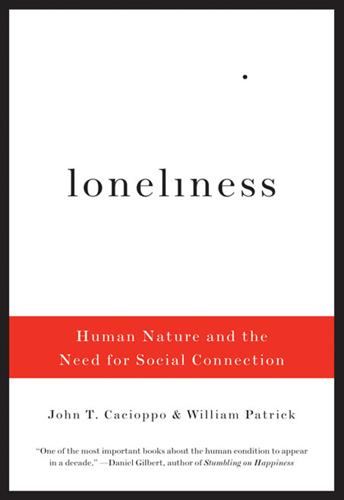
Loneliness: Human Nature and the Need for Social Connection
by
John T. Cacioppo
Published 9 Aug 2009
But individual organisms also coordinate with one another, as do aggregations of organisms, and on and on up the ladder to greater and greater levels of complexity, from beehives to book clubs. The molecular biologists Ned Wingreen and Simon Levin argue that the term “single-celled,” even when applied to the amoeba, the classic creature studied by kids with microscopes, may be a misnomer. Even the lowly bacteria that cover our teeth form biofilms that are actually large interspecies collectives that provide benefit to us while taking care of their own. Similarly, four different species of bacteria live on the roots of tomato plants, working in coordinated fashion as they fix nitrogen, promote growth hormones, and fight off competitors. Again, there is no social contract—there is not even a coordinating intelligence—and yet these organisms have found a way to benefit from social connection and cooperation.
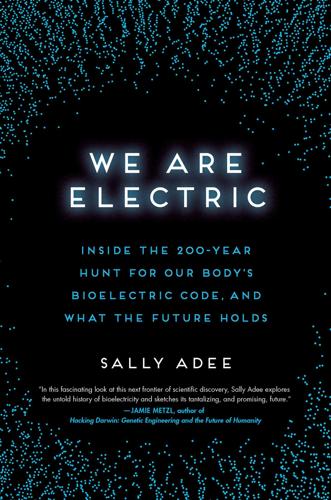
We Are Electric: Inside the 200-Year Hunt for Our Body's Bioelectric Code, and What the Future Holds
by
Sally Adee
Published 27 Feb 2023
Reports from disparate fields of study indicate that the electrical signals used by plants, bacteria, and fungi are all weirdly similar to our own, and the research is beginning to suggest that they use these signals to very similar effect. Bacteria use electrical calcium waves to coordinate themselves into biofilm communities (disrupting these electrical control signals is a hot research topic in the fight against antibiotic resistance).25 Fungi use them (among other things) to communicate along their long tendrils whether they’ve found a nourishing food source or a dud.26 Plants use electricity to activate chemical defenses against predators.

Is the Internet Changing the Way You Think?: The Net's Impact on Our Minds and Future
by
John Brockman
Published 18 Jan 2011
And your children’s always-on community of friends, texting lols and other quick messages that really say “I’m here, I’m your friend, let’s have a party,” is no different than the quorum sensing of microbes, counting their numbers so that they can do something collectively, such as invade a host or grow a fruiting body from a biofilm. I’m starting to think like the Internet, starting to think like biology. My thinking is better, faster, cheaper, and more evolvable because of the Internet. And so is yours. You just don’t know it yet. The Internet Makes Me Think in the Present Tense Douglas Rushkoff Media analyst; documentary writer; author, Life, Inc.: How the World Became a Corporation and How to Take It Back How does the Internet change the way I think?

This Will Make You Smarter: 150 New Scientific Concepts to Improve Your Thinking
by
John Brockman
Published 14 Feb 2012
The term “cultural evolution” never meant much, because the fluidity of memes and influences in society bears no relation to the turgid conservatism of standard Darwinian evolution. But “social microbialism” might mean something as we continue to explore the fluidity of traits and the vast ingenuity of mechanisms among microbes—quorum sensing, biofilms, metabolic bucket brigades, “lifestyle genes,” and the like. Confronting a difficult problem, we might fruitfully ask, “What would a microbe do?” The Double-Blind Control Experiment Richard Dawkins Evolutionary zoologist, University of Oxford; author, The Greatest Show on Earth: The Evidence for Evolution Not all concepts wielded by professional scientists would improve everybody’s cognitive toolkit.
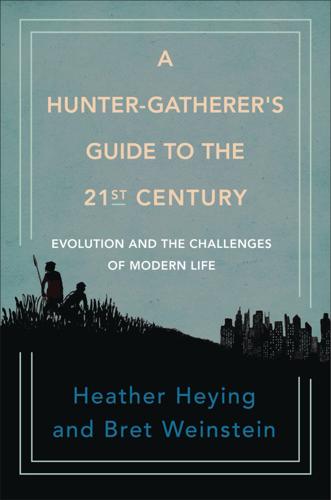
A Hunter-Gatherer's Guide to the 21st Century: Evolution and the Challenges of Modern Life
by
Heather Heying
and
Bret Weinstein
Published 14 Sep 2021
Journal of Anatomy and Physiology, 35(Part 1): 83–105. 12. Laurin, M., Everett, M. L., and Parker, W., 2011. The cecal appendix: One more immune component with a function disturbed by post-industrial culture. Anatomical Record: Advances in Integrative Anatomy and Evolutionary Biology, 294(4): 567–579. 13. Bollinger, R. R., et al., 2007. Biofilms in the large bowel suggest an apparent function of the human vermiform appendix. Journal of Theoretical Biology, 249(4): 826–831. 14. Boschi-Pinto, C., Velebit, L., and Shibuya, K., 2008. Estimating child mortality due to diarrhoea in developing countries. Bulletin of the World Health Organization, 86: 710–717. 15.

Whole Earth Discipline: An Ecopragmatist Manifesto
by
Stewart Brand
Published 15 Mar 2009
Tiny as they are, microbes can learn. (E. coli anticipate and prepare for the sequence of environments they face in our intestines during digestion.) Microbes do complex quorum sensing, both within species and between species—they are in that sense multicellular. (In order to coordinate group benefits such as biofilm structure and toxin release, they signal each other through chemical autoinducers.) They make rain on purpose. (Some bacteria have a surface protein that binds water molecules into raindrops and snow; when they get stuck in the air, this characteristic gets them back down to the ground. The total of such behavior is Gaian, a global feedback between life and the atmosphere.)
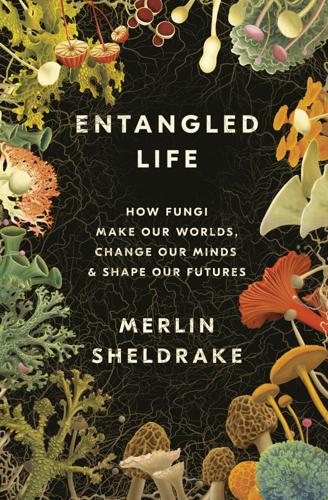
Entangled Life: How Fungi Make Our Worlds, Change Our Minds & Shape Our Futures
by
Merlin Sheldrake
Published 11 May 2020
Oxford, UK: Oxford University Press. Lipnicki LI. 2015. The role of symbiosis in the transition of some eukaryotes from aquatic to terrestrial environments. Symbiosis 65: 39–53. Liu J, Martinez-Corral R, Prindle A, Lee D-YD, Larkin J, Gabalda-Sagarra M, Garcia-Ojalvo J, Süel GM. 2017. Coupling between distant biofilms and emergence of nutrient time-sharing. Science 356: 638–42. Lohberger A, Spangenberg JE, Ventura Y, Bindschedler S, Verrecchia EP, Bshary R, Junier P. 2019. Effect of organic carbon and nitrogen on the interactions of Morchella spp. and bacteria dispersing on their mycelium. Frontiers in Microbiology 10: 124.
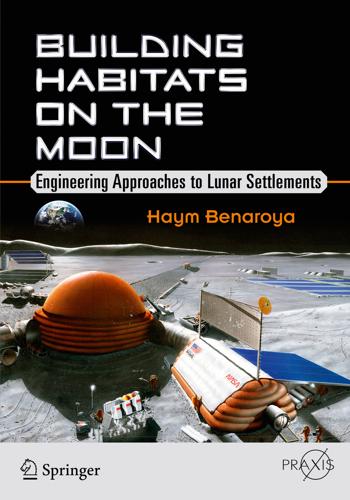
Building Habitats on the Moon: Engineering Approaches to Lunar Settlements
by
Haym Benaroya
Published 12 Jan 2018
Whether through EVA operations, or on the lunar surface, exposure to hydrazine, found in spacecraft propulsion systems, can be fatal, “with reported effects involving the central nervous system, the blood, the liver, the kidneys, and the immune system.” The enclosed spaceflight and lunar habitat environment represent serious challenges, in particular to “controlling the growth of microflora [and] biofilms ... from the standpoint of the potential for contaminant generation, and the possibility of their deliberate controlled use in bioregenerative life support systems ... may pose additional complications such as 1) a source of chemical corrosion on containment vessel surfaces, which are usually extremely thin, and 2) a secondary source for the generation of toxic chemical species. ...
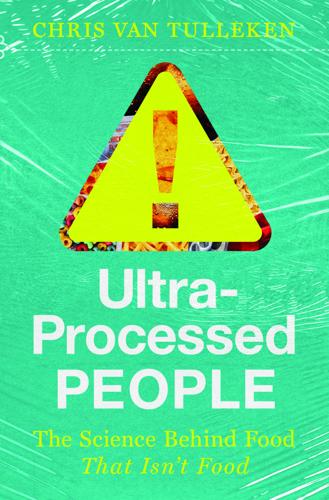
Ultra-Processed People: The Science Behind Food That Isn't Food
by
Chris van Tulleken
Published 26 Jun 2023
The infant who is breastfed receives their microbiome from their mother as well as specific antibodies in the milk which favour the development of the useful bacteria. There’s a frenzied engagement during the first few years of life, until the child and a few hundred species decide to settle down together and the microbiome becomes one of the body’s largest immune organs. We provide the microbes with a warm, wet mucus home full of nutrition, and they form biofilms, sheets of slime that limit the ability of harmful bugs to harm either them or us. They are a consortium, a coalition, providing a bulwark against would-be invaders or colonists. For every one of your cells there are, by some estimates, 100 other organisms living as part of you: viruses, phages, bacteria, protozoans, archaea, fungi, and even a few animals like worms and mites.
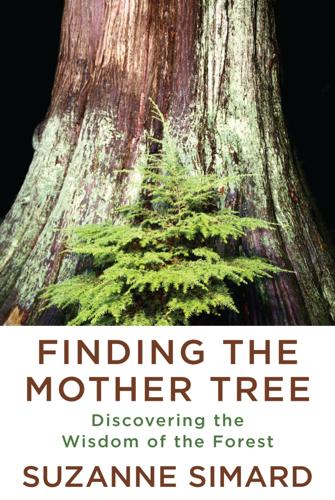
Finding the Mother Tree: Discovering the Wisdom of the Forest
by
Suzanne Simard
Published 3 May 2021
There were some that produced energy-rich exudates that fueled bacteria performing other jobs, such as breaking down humus or transforming nitrogen or fighting disease, while other fungi produced fewer exudates because their jobs required less energy. The glossy sheen of the Piloderma mycorrhiza I’d seen linked to the birch suggested that it held a rich supply of carbon, supporting a biofilm of the luminescent Pseudomonas fluorescens bacteria, whose antibodies could shrivel the growth of the root pathogen Armillaria ostoyae. The Tuber mycorrhiza turned out to host Bacillus bacteria that transformed nitrogen, helping explain why birch leaves had so much more nitrogen than fir needles.
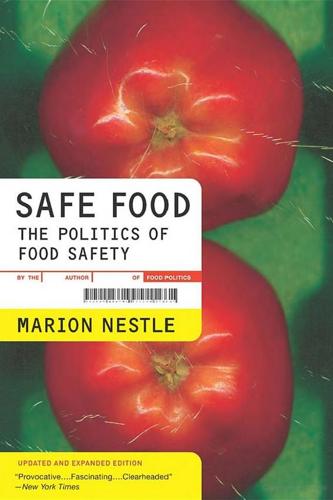
Safe Food: The Politics of Food Safety
by
Marion Nestle
Published 1 Jan 2010
Investigations revealed only minor procedural flaws. Although this was the twentieth E. coli O157:H7 outbreak from leafy greens in recent years, nobody seemed to have come to grips with how firmly these bacteria adhere to leaf surfaces. They can be incorporated into lettuce or spinach leaves just under the surface and form tightly adhering biofilms.20 Although the spinach was marketed as conventional, industrial growers immediately blamed the outbreak on manure-based fertilizers used in organic production. In October 2006, I wrote an opinion piece for the San Jose Mercury News listing the obvious lessons taught by the outbreak—prevention is essential, voluntary never works, industrial agriculture has its down side—among them, “don’t blame organics this time.”21 A vegetable grower in California soon set me straight.
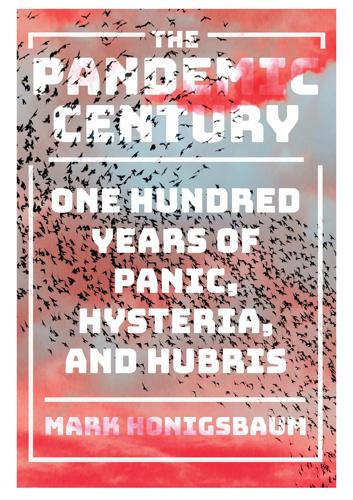
The Pandemic Century: One Hundred Years of Panic, Hysteria, and Hubris
by
Mark Honigsbaum
Published 8 Apr 2019
These include showerheads, hot tubs, whirlpool spas, water fountains, humidifiers, misting equipment, and architectural fountains. Cooling towers are of particular concern because the pools of warm water are open to the atmosphere—indeed, Legionella bacteria have been repeatedly isolated from the biofilms of slime and encrusted sludge on top of such towers, with some surveys indicating that as many as half of all cooling towers in the United States may be contaminated with the organisms. If such towers are not regularly serviced, this contaminated water can be aerosolized into microscopic droplets containing Legionella, enabling the organism to be drawn directly into a person’s lungs.

Lifespan: Why We Age—and Why We Don't Have To
by
David A. Sinclair
and
Matthew D. Laplante
Published 9 Sep 2019
In New England, where we live, there is an epidemic of ticks that carry the bacterial spirochete Borrelia burgdorferi, which causes Lyme disease. Recent estimates suggest that approximately 300,000 people in the United States may contract the disease each year. Left untreated, Borrelia hides out in skin cells and lymph nodes, causing facial paralysis, heart problems, nerve pain, memory loss, and arthritis. It hides in a protective biofilm, making it extremely difficult to kill. Natalie never had a red ring of skin around a tick bite—a sure sign you’ve contracted the parasite. She had been complaining about a headache and sore back, typical signs of flu. But quickly it became clear that this wasn’t flu—it was something much worse.

Rikers: An Oral History
by
Graham Rayman
and
Reuven Blau
Published 17 Jan 2023
And it’s going to bother you. Laundry soap is a high-pH soap, which was lye. Skin irritation. Surprisingly or not surprisingly, African Americans are most susceptible to that, just the nature of their skin. Secondly, their laundry was constantly wet. And if it’s constantly wet, you now have biofilm, which is basically soap scum, water, and a lot of bacteria. You have mold growth, and you have, because of constant wetness, spalling of tile, peeling of paint. And that makes conditions you can’t clean. JACQUELINE VELEZ: When I got a job in the officer’s Bubble [a glass-enclosed booth where an officer sits to observe the unit], that was a privileged job.
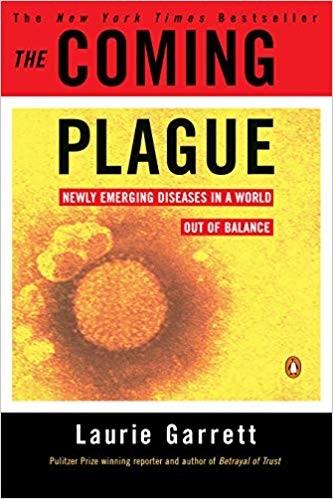
The Coming Plague: Newly Emerging Diseases in a World Out of Balance
by
Laurie Garrett
Published 31 Oct 1994
The epidemiology team in Philadelphia meanwhile noticed that most of the Legionnaires’ Disease sufferers had spent time schmoozing in the five cocktail suites run by the candidates for leadership of the veterans’ group. Further analysis revealed that the bacteria thrived in the Bellevue-Stratford Hotel’s cooling tower. From that water supply, the hotel derived its air conditioning. The Legionella organisms were hidden in biofilm “scums” along the edges of the cooling tower, and were actively pumped into the hotel’s hospitality suites during the hot month of July. It wasn’t long before similar cases of Legionnaires’ Disease surfaced all over the world. First, the CDC spotted isolated cases in eleven different states.57 By September 1977, the federal agency was busily tracking three hospital outbreaks in Ohio,58 one in Vermont,59 and one in Tennessee.60 The combined fatalities in the Ohio, Vermont, and Tennessee outbreaks and sporadic isolated cases in 1977 reached thirty-two by December, about 25 percent of all reported Legionnaires’ cases.61 In the fall of 1977 a small epidemic of Legionnaires’ broke out in a hospital in Nottingham, England, leaving three patients dead.62 In the summer of 1977 Legionnaires’ struck a brand-new hospital located in one of the wealthiest parts of Los Angeles.
…
At the CDC’s International Legionnaires’ Disease meeting in 1978, several particularly ominous facets of the bug were scrutinized. CDC scientists revealed that the organism could be found in tap water, shower nozzles, and other allegedly clean water sources. One tap water study showed Legionella could survive over a year inside pipe biofilms, emerging in wholly infectious form once the faucet was turned on full force. It thrived in temperatures from ice cold to steamy hot. Even distilled water samples occasionally contained small numbers of Legionella organisms. A team of scientists from the Denver Veterans Administration Medical Center was particularly prescient, predicting the bacteria might survive chlorine purification efforts.
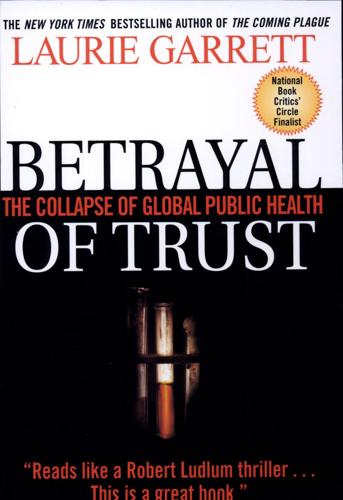
Betrayal of Trust: The Collapse of Global Public Health
by
Laurie Garrett
Published 15 Feb 2000
Such novelty is rarely subject to swift analysis. In January 1977 the CDC announced that the culprit was a bacterium they dubbed Legionella, and it was spread through air-conditioning systems. Legionella, it turned out, was a scum bacterium that grew in the biofilms that formed at the interfaces of air and nonsalty water. Air conditioners, showers, misters, humidifiers, and similar devices that sprayed moist air were rife with biofilms, and if the device was not cleaned regularly and filtered, those scum layers would grow and become Legionella breeding grounds. Once the organism was discovered, the CDC and the state public health agencies set to work testing human samples saved from past, mysterious pneumonia outbreaks.

Behave: The Biology of Humans at Our Best and Worst
by
Robert M. Sapolsky
Published 1 May 2017
Grattan, “Prolactin, Neurogenesis, and Maternal Behaviors,” Brain, Behav and Immunity 26 (2012): 201. 26. W. D. Hamilton, “The Genetical Evolution of Social Behaviour,” J Theoretical Biol 7 (1964): 1. 27. S. West and A. Gardner, “Altruism, Spite and Greenbeards,” Sci 327 (2010): 1341. 28. S. Smukalla et al., “FLO1 Is a Variable Green Beard Gene That Drives Biofilm-like Cooperation in Budding Yeast,” Cell 135 (2008): 726; E. Queller et al., “Single-Gene Greenbeard Effects in the Social Amoeba Dictyostelium discoideum,” Sci 299 (2003): 105. 29. B. Kerr et al., “Local Dispersal Promotes Biodiversity in a Real-Life Game of Rock-Paper-Scissors,” Nat 418 (2002): 171; J.